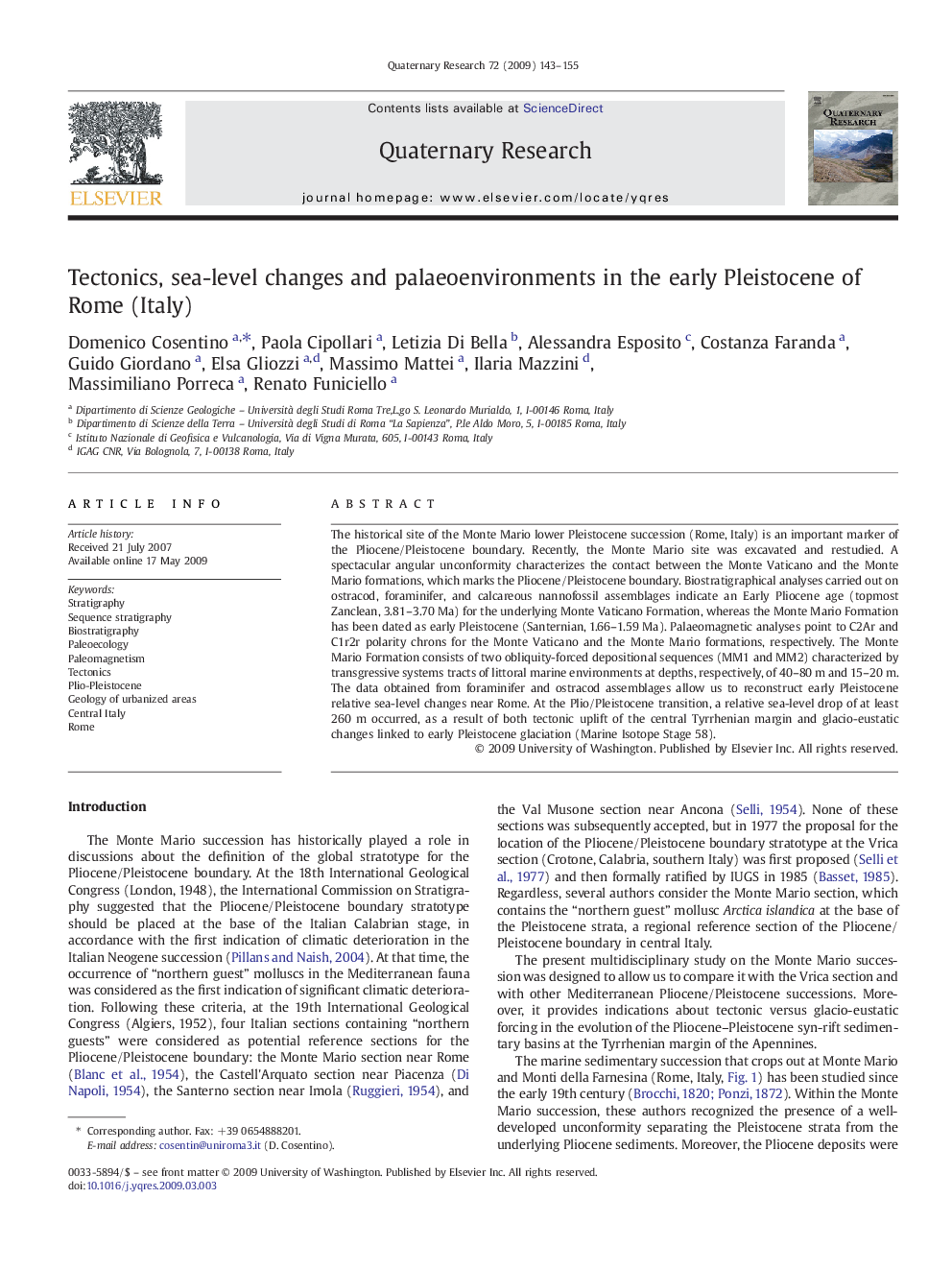| Article ID | Journal | Published Year | Pages | File Type |
|---|---|---|---|---|
| 1045988 | Quaternary Research | 2009 | 13 Pages |
Abstract
The historical site of the Monte Mario lower Pleistocene succession (Rome, Italy) is an important marker of the Pliocene/Pleistocene boundary. Recently, the Monte Mario site was excavated and restudied. A spectacular angular unconformity characterizes the contact between the Monte Vaticano and the Monte Mario formations, which marks the Pliocene/Pleistocene boundary. Biostratigraphical analyses carried out on ostracod, foraminifer, and calcareous nannofossil assemblages indicate an Early Pliocene age (topmost Zanclean, 3.81-3.70Â Ma) for the underlying Monte Vaticano Formation, whereas the Monte Mario Formation has been dated as early Pleistocene (Santernian, 1.66-1.59Â Ma). Palaeomagnetic analyses point to C2Ar and C1r2r polarity chrons for the Monte Vaticano and the Monte Mario formations, respectively. The Monte Mario Formation consists of two obliquity-forced depositional sequences (MM1 and MM2) characterized by transgressive systems tracts of littoral marine environments at depths, respectively, of 40-80Â m and 15-20Â m. The data obtained from foraminifer and ostracod assemblages allow us to reconstruct early Pleistocene relative sea-level changes near Rome. At the Plio/Pleistocene transition, a relative sea-level drop of at least 260Â m occurred, as a result of both tectonic uplift of the central Tyrrhenian margin and glacio-eustatic changes linked to early Pleistocene glaciation (Marine Isotope Stage 58).
Keywords
Related Topics
Physical Sciences and Engineering
Earth and Planetary Sciences
Geology
Authors
Domenico Cosentino, Paola Cipollari, Letizia Di Bella, Alessandra Esposito, Costanza Faranda, Guido Giordano, Elsa Gliozzi, Massimo Mattei, Ilaria Mazzini, Massimiliano Porreca, Renato Funiciello,
